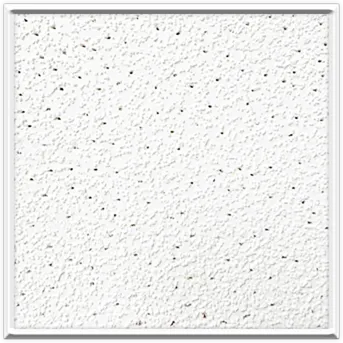8 月 . 12, 2024 19:06 Back to list
Effective Solutions for Ceiling Grid Insulation to Enhance Energy Efficiency and Comfort
Understanding Ceiling Grid Insulation Importance, Types, and Installation
Insulation plays a crucial role in maintaining comfortable indoor environments and enhancing energy efficiency in buildings. One of the often-overlooked areas in insulation is the ceiling grid, which is particularly important in commercial spaces such as offices, schools, and hospitals. This article explores the significance of ceiling grid insulation, the various types available, and practical considerations for installation.
Importance of Ceiling Grid Insulation
Ceiling grid insulation is pivotal for several reasons. First and foremost, it helps regulate indoor temperatures by minimizing heat loss in winter and preventing excessive heat gain in summer. This capability not only contributes to occupant comfort but also reduces reliance on heating and cooling systems, leading to lower energy bills.
Moreover, ceiling grid insulation can improve acoustics within a space. It absorbs sound and minimizes noise transfer between rooms, which is essential in settings like classrooms and conference rooms where focus and concentration are paramount. Furthermore, proper insulation helps prevent moisture build-up, mitigating the risk of mold and structural damage over time.
Types of Ceiling Grid Insulation
When considering ceiling grid insulation, there are several types to choose from
1. Fiberglass Insulation This is one of the most commonly used insulation materials for ceiling grids. Fiberglass is lightweight, non-combustible, and offers excellent thermal performance. It is also resistant to moisture, making it a suitable choice for various environments.
2. Foam Board Insulation Foam board offers high insulating value with relatively thin profiles, making it ideal for areas where space is limited. Rigid foam panels can be installed in conjunction with ceiling grids to enhance thermal efficiency.
3. Mineral Wool Insulation Known for its fire-resistant properties, mineral wool insulation is also effective in soundproofing. It provides excellent thermal resistance and is often used in commercial buildings where fire safety is a concern.
ceiling grid insulation

4. Acoustic tiles While primarily designed for sound absorption, many acoustic tiles also incorporate insulation properties. These tiles can be used in conjunction with ceiling grid systems to enhance both sound quality and thermal efficiency.
5. Reflective Insulation This type reflects radiant heat, making it particularly useful in climates where cooling is necessary. It can be installed over ceiling grids to reduce cooling costs in hot weather.
Installation Considerations
Proper installation of ceiling grid insulation is crucial to maximize its effectiveness. Here are some key considerations
- Assessment Before installation, it is important to assess the existing ceiling structure and identify areas that require insulation. Engaging a professional can help ensure that the assessment is thorough.
- Moisture Barrier In areas susceptible to moisture, a vapor barrier should be installed to prevent condensation from accumulating on the insulation material.
- Air Sealing Proper sealing around ducts, vent openings, and electrical fixtures is necessary to prevent air leaks, which can undermine insulation efficiency.
- Fire Safety Ensure that the insulation materials used are compliant with local fire safety codes, especially in commercial buildings.
In conclusion, ceiling grid insulation is an essential component of building efficiency, occupant comfort, and sound management. By understanding the different types available and following proper installation practices, building owners can significantly enhance their indoor environment while reducing energy costs. Whether for new construction or retrofitting existing spaces, investing in quality ceiling grid insulation is a wise decision that pays dividends in the long run.
-
Revolutionizing Interior Design with Ceilings t grid Suspended SystemNewsOct.29,2024
-
Revolutionizing Ceiling Design with ceiling access panel with Gypsum Tile WaterproofNewsOct.29,2024
-
Revolutionizing Interior Design with PVC Gypsum Ceiling: A Comprehensive GuideNewsOct.29,2024
-
Elevating Interior Design with High quality Mineral Fiber Ceiling TilesNewsOct.29,2024
-
Revolutionizing Interior Design with PVC Gypsum Ceiling: A Comprehensive GuideNewsOct.29,2024
-
Elevating Interior Design with High-Quality Mineral Fiber Ceiling Tiles: A Comprehensive GuideNewsOct.29,2024







